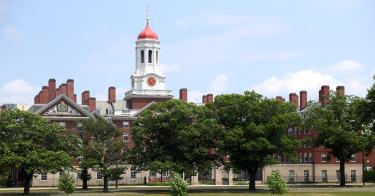“Diversity is our strength” has been a battle cry of leftists for decades, undergirding their hope that a national “majority-minority” population will one day defeat the mythical “white supremacy.” Ironically, that diversity might be a double-edged sword. It may be about to bury one of the Left’s holy grails: racial preferences.
The Supreme Court is once again weighing the great societal costs of using race to decide who gets into college, almost 45 years after the court foisted this practice on the entire country in 1978 with its Regents of the University of California v. Bakke decision. But unlike past cases the court has heard on this issue, Students for Fair Admission v. University of North Carolina and Students for Fair Admission v. Harvard have as plaintiffs a group of Chinese-Americans, which shatters the main excuses for racial preferences.
In the long-drawn-out debate over the past half-century, and in the related cases the court has considered, the cost and benefits of racial preferences have been cast mostly in black-and-white terms—literally. Derrick Bell, the recognized godfather of critical race theory, may have put it best when he wrote this in the California Law Review in 1979:
There is an implicit, often unacknowledged stumbling block in our society's approach to racial remedies. The central issue in remedying past discrimination commonly has been conceived in the following terms: “Conceding that blacks have been harmed by slavery, or segregation, or discrimination, which groups of whites should pay the price or suffer the disadvantage that may be incurred in implementing a policy nominally directed at rectifying that harm?”
>>> The Real Dispute at Heart of Affirmative Action Cases Now Before High Court
Another gripe Bell had was that “This question, which focuses on the cost to whites of racial remedies rather than on the necessity of relief for minorities, obviously has been framed by whites for discussion with other whites.”
And, in that last part of his analysis, Bell wasn’t wrong—until now. The plaintiffs who brought the two cases being considered by the Supreme Court are also minorities, Asian-American students who have been victimized by affirmative action.
They charge that Harvard and the University of North Carolina are unfairly refusing to admit highly qualified students to make room for less-qualified black and Hispanic students. This was the same scheme Harvard used to keep out Jewish students in the 1920s, the plaintiffs say.
They charge that Harvard, specifically, is stereotyping Asian Americans as not having the requisite personal character and fitness to be admitted despite having outstanding academic credentials. According to the New York Times, Harvard’s lawyer Seth Maxman “did not contest that on average they received lower ratings for personal qualities” during the case’s oral arguments last week. The court has considered other racial preference cases in the past 44 years: Grutter v. Bollinger in 2003, and two cases—one in 2013 and another in 2016—in which student Abigail Noel Fisher was the plaintiff against the University of Texas. They are known as Fisher I and Fisher II.
Fisher, Grutter, and Bakke were all white. In all these cases, the court held its nose and allowed racial discrimination to exist, making an exception to the Constitution’s equal protection requirement and civil rights laws while also clarifying at times that this exception should only be temporary and remedial. In his influential concurring opinion in the Bakke case, Justice Harry Blackmun wrote, “We cannot—we dare not—let the Equal Protection Clause perpetuate racial supremacy.”
But Blackmun also said that “In order to get beyond racism, we must first take account of race,” an illogicality that should have raised red flags. More importantly, however, his use of the word “first” suggests an expiration date for this scheme.
By the sound of the justices’ questions this week, it appeared even to the New York Times that the high court has run out of patience with an arrangement that violates the nation’s law and ideals. The rest of the country turned its back on the ugly practice long ago; even the Washington Post now admits that Americans oppose racial preferences by nearly two-to-one.
That the victims this time are Chinese-Americans, mostly immigrants or the children of immigrants, makes all the difference.
To answer Bell’s question point blank, nobody today should pay any price for sins and crimes committed in the past, not whites or people of any color. Ibram X. Kendi is wrong when he says that “The only remedy to past discrimination is present discrimination.” We cannot change the past; committing an injustice in the present will not remedy a past injustice.
But to believe that immigrants who arrived here without language skills or connections should bear the burden beggars belief.
>>> Back to Campus and the Return of Shout Downs
Asian immigrants have succeeded because they have mostly followed traditional American norms. They have lower rates of divorce and out-of-wedlock births, and their children spend more hours doing homework.
To CRT, these norms sustain white supremacy. “The concepts of ‘merit’ and ‘qualifications’ have a function only in relation to existing social practices,” CRT architect Gary Peller wrote in 1990 in the Duke Law Journal. “Once we consider the possibility that existing social practices might reflect the domination of particular racial groups, those practices can no longer provide a neutral ground from which to defend existing definitions either of qualifications or of merit.”
What this new generation of Chinese Americans is demonstrating is that these norms simply lead to individual success, no matter what hue your skin is. It is unconscionable that these hard-working students are being kept out of schools like Harvard based on the color of their skin. The Supreme Court has a responsibility to rectify this injustice and prevent it from ever happening again.
This piece originally appeared in the Washington Examiner




